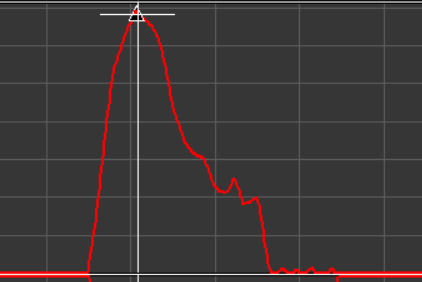
How Manual Brakes Improve Lap Times
11 minute read
By Bryan Leonard, Pro Race Car Driver and Chase Bays Builds Manager
https://www.instagram.com/bryan_leonard_racing/
The fact is, manual brakes are on the fastest road race cars in the world. From IMSA to F1. But how is this possible!? You read online it was like trying to put your foot through a brick wall! How exactly can manual brakes improve lap times?
The major point I drive home to all those that I coach; consistency. If you can be a consistent driver and make decisions with intention rather than reaction, you are setting yourself up for success. So to be fast we have to be consistent drivers. We are the throttle, brake, and steering actuators on a car.
That means we need those things to be consistent. Throttle is generally consistent (unless you get into DBW with throttle shaping but thats not for this convo). Steering can be consistent if it is either manual, electronic, or properly cooled and managed hydraulic power steering. We also assume our suspension setup is correct and not out of alignment, producing consistency there too.
Braking consistency, this is the last step. I have and will always stand by the comment: braking is the hardest thing to do to extract a lap. How you get on the brakes, how long you are on them, when you release them, the time frame you release them in coupled with steering angle. That's hard stuff.
There is a reason why you see Miatas at the track beating up Corvettes and Porsches. Of course there is the driver mod, but doesn't that mean the Miata driver is utilizing the brakes more effectively? Because they certainly are in a lesser power car.
Now here's how we pull it off. I spoke of consistency earlier, we need to be proactive not reactive with everything we do. In order to accomplish this, we have to have a consistent pedal. The manual brake is the surest way to accomplish this. In a prior blog, I used the analogy of pressure from your finger to a wall. Here is a refresher, if I ask you to place your finger on a wall and give me a little pressure, you can do that, if I ask for a lot of pressure you can do that as well. Just because the wall didn't move doesn't mean there was no pressure applied to the wall.
So with a more firm pedal we can produce brake pressure that is consistent and predictable. With this you will be able to repeat results each lap because the pedal feels the same way. You will have the confidence that heading into 10a at Road Atlanta, that your brake pedal will feel exactly the same each time, thus allowing you to play with brake zone depth and releases. As we stated before, its also important how and when you release the brake pressure as well. Now that we know what the initial force feels like and how quickly the car decelerates. This will allow us to properly set up braking zones.
In conclusion, the opportunity list looks like this.
1. Consistent pedal feel (assuming proper setup, no air in the system, or overheated brakes)
2. Allows us to easily explore gains and loses in the braking zone by playing with brake timing and release.
3. Trains us to be proactive rather than reactive to our pedal. Power brakes inconsistency in pedal feel cause slight hesitation. This lowers driver confidence thus hurts lap times.
This is an example of a power assisted brake. Notice how the pressure is inconsistent? This could be due to the fact that the pedal moves to much and the driver "pumps" the pedal trying to get it to slow down.

This is an example of a manual brake trace. Notice how the initial braking force is high and slowly tapers off. This is what the brake trace should look like, this eliminates braking distance thus resulting in faster lap times.
These are all dual master setups with balance bars. They are great, but it’s not exactly in most of the grassroots/amateur motorsports worlds budget. Enter the Chase Bays Dual Piston Brake Booster Delete with Bolt-On 6:1 Pedal Ratio. This system allows you to receive many benefits from the manual brakes, without the fab/cost of an expensive system. Having now driven with this system, and won our first race with one, I can confidently say this is your ticket to faster laps. We took someone with zero experience with a manual brake, installed this system on his car, he immediately went faster. The only piece of advice I would give is to pump your brakes before the braking zones. Not a large amount of pressure, maybe 10%...just enough to reset the pads. Unless you have anti-knock back springs you need to do this. The power brakes give off the false sense of not needing to do this. I can assure you, you need to. When you strike curbs or load a side, the pads will push back a little. Thus the pedal will travel further making it seem like you have a long pedal. This happens on manual or power brakes. The power brakes just mask this a little bit more. By giving the brakes a small tap with your left foot pre-turn, you will have knocked the pads back into place.
Anyone that I have introduced to manual brakes have questioned why they didn’t do this sooner. I would list this Chase Bays mod as a must for any track day/ grassroots/Am racer where the series allows it. Its compact, its attractive, the engineering is already finished.
As I said before braking is the most crucial thing you can do on track. People should stop worrying about horsepower and start wondering how to get their mid corner speed up. The way to do this is to properly execute braking zones. Ditch the factory components, get a Chase Bays Dual Piston Brake Booster Delete. You will easily go faster immediately and become a better driver. Things to remember:
-
Set the pads in the straights right before a braking zone
-
Initial brake force is the highest, trail off, as you wheel angle increases, steering angle should decrease.
-
Release gradually, do not snap off.



